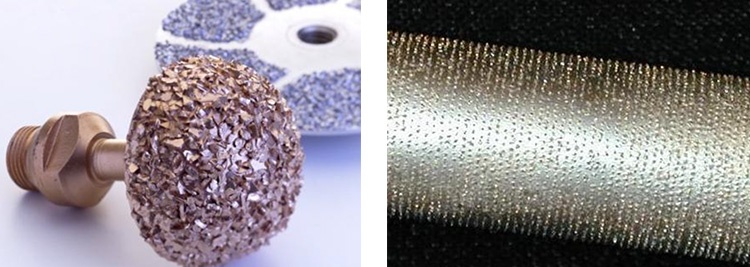
The active brazing process enables a high-strength metallurgical bond between the hard material and the tool carrier. This leads to better application properties in all applications where high mechanical and/or thermal loads occur.
The need for improved cutting and grinding processes, as well as the use of new materials and components with complex shapes, require the use of tools with diamonds or cBN as cutting or grinding materials. Vacuum brazing is a universal method to attach super-hard abrasive grains or shaped bodies to a tool carrier. The combination of vacuum brazing and active brazing alloys opens up new possibilities with regard to the selection of superhard materials and the tool design. Diamonds and cBN can be joined to a wide range of tool carriers without a prior metallization. For grinding tools, the grit size, distribution, and embedment of the abrasive grains can thus be adapted to the specific application conditions.
The active brazing process enables high-strength, metallurgical bonds between the hard-material and the tool carrier. This leads to improved application properties in all applications where high mechanical and/or thermal loads occur.
Further advantages of this bonding technique:
- Broader range of applicable brazing alloys
- Variable brazing temperatures
- Previous metallization or carbide base of the hard material not required
- Adjusted brazing strengths
- Increased operating temperature
- Strong metallurgical bonds
- Larger grain protrusion



 Listemann AG
Listemann AG Listemann Polska Sp.z o.o.
Listemann Polska Sp.z o.o.